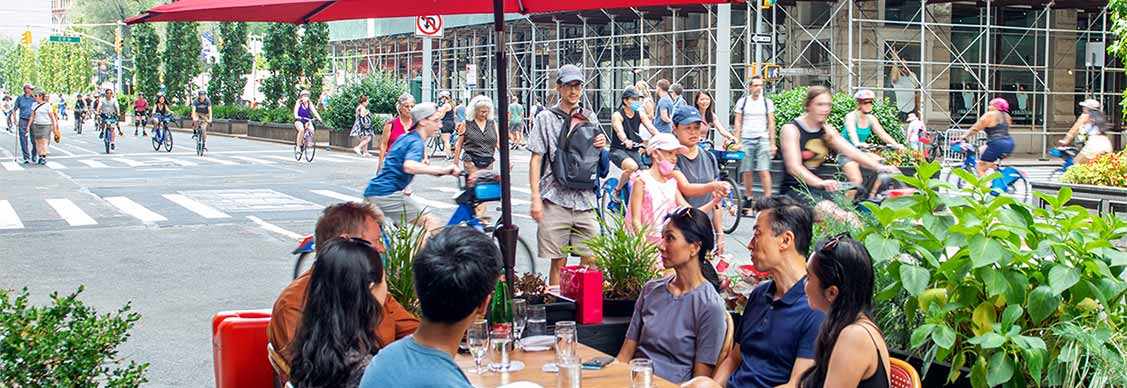Road closed, but open for business
Street closures provide a boom to retail businesses.
Soon after the pandemic shut down indoor dining last year, cities across the globe adopted programs that barred most drivers from using certain stretches of street.
Santa Barbara’s State Street closed to traffic, giving restaurateurs the opportunity to expand seating into the road. Many say it prevented them from having to close.
“[The street closures] gave us an opportunity to survive,” Tina Takaya, owner of Opal on upper State Street, told Noozhawk.
Data from Yelp first published in Bloomberg found that businesses in car-free zones in many other cities saw more activity than those that remained open to vehicle traffic. San Francisco’s Valencia Street, for example, saw an 18 percent increase in consumer activity; Chicago’s West Fulton Market saw a 25 percent increase and Boston’s Little Italy saw a whopping 61 percent jump in consumer activity.
“Those numbers are only based on restaurant activity, but they’re promising,” says James Cook, Americas Director or Research, Retail, JLL. “Most people have seen some form of this in their own cities – many restaurants that had access to parking spaces for seating or to closed streets stayed afloat, while many restaurants outside of those zones, or with no access to outdoor space in which to expand, struggled — even restaurants that were popular before the pandemic, unless they made a strong pivot to take out.”
Looking for more insights? Never miss an update.
The latest news, insights and opportunities from global commercial real estate markets straight to your inbox.
Jackson Heights
A section of 34th Avenue in Queens is closed to traffic in as part of New York City’s Open Streets program. It’s part of an effort that launched in March 2020 aimed at spurring the city’s economy while ensuring safety amid the COVID-19 pandemic. The New York Times recently identified 34th street as somewhat of a case study in the potential of the model — but also its challenges.
The avenue, which falls in the Jackson Heights neighborhood, was celebrated by New York Mayor Bill de Blasio and many in the urban planning community as an example of a more sustainable city street with less pollution from cars. In June 2020, daily pedestrian trips to the avenue doubled from pre-pandemic levels and have remained higher nearly every month since, according to an analysis by StreetLight Data.
New York City’s Open Streets program, overall, was a success in helping businesses survive the pandemic. An estimated 12,000 restaurants seated customers in the streets. Mayor De Blasio credited the program with saving close to 100,000 jobs.
But efforts to close 34th more permanently, making it into a so-called “linear park,” sparked backlash from drivers who complained the closed avenue caused gridlock on surrounding streets, made it harder to find parking spots, and other inconveniences. While cars are permitted on the avenue to pick up and drop off passengers, make deliveries, and park, some drivers say they avoid it because the pedestrians and cyclists create an obstacle course-like environment.
“If you ask the people out and about on these closed streets listening to live music on a sunny summer day, you won’t hear any complaints,” Cook says. “But there are also detractors.”
